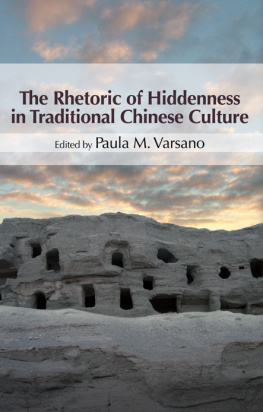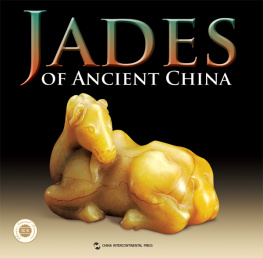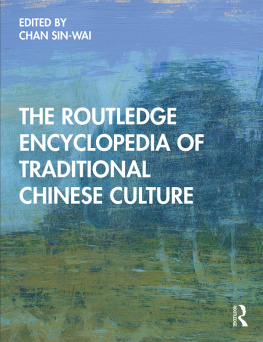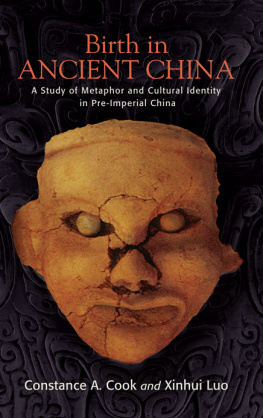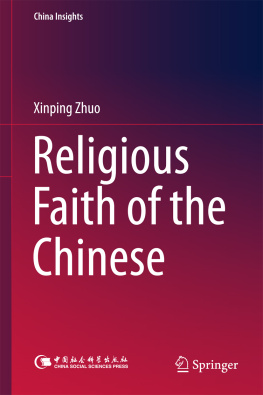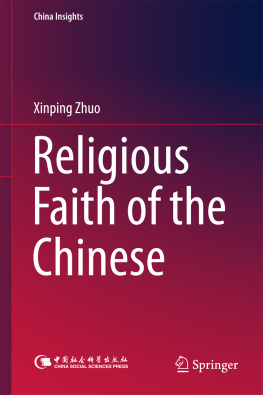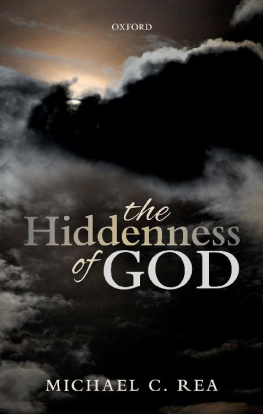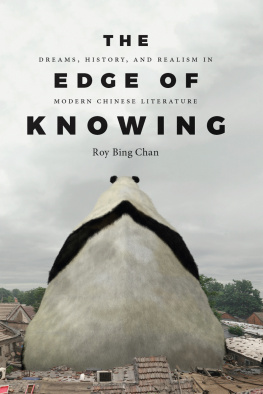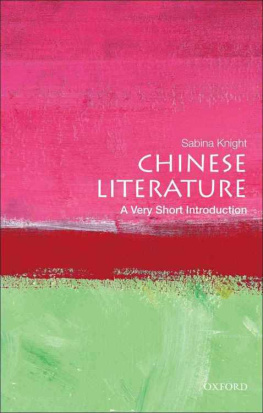The Rhetoric of Hiddenness
in Traditional Chinese Culture
SUNY series in Chinese Philosophy and Culture
Roger T. Ames, editor
The Rhetoric of Hiddenness
in Traditional Chinese Culture
Edited by
Paula M. Varsano
Published by State University of New York Press, Albany
2016 State University of New York
All rights reserved
Printed in the United States of America
No part of this book may be used or reproduced in any manner whatsoever without written permission. No part of this book may be stored in a retrieval system or transmitted in any form or by any means including electronic, electrostatic, magnetic tape, mechanical, photocopying, recording, or otherwise without the prior permission in writing of the publisher.
For information, contact State University of New York Press, Albany, NY
www.sunypress.edu
Production, Ryan Morris
Marketing, Kate R. Seburyamo
Library of Congress Cataloging-in-Publication Data
Names: Varsano, Paula M., editor.
Title: The rhetoric of hiddenness in traditional Chinese culture / edited by Paula M. Varsano.
Description: Albany : State University of New York Press, 2016. | Series: SUNY series in Chinese philosophy and culture | Includes bibliographical references and index.
Identifiers: LCCN 2016007693 (print) | LCCN 2016038163 (ebook) | ISBN 9781438463032 (hardcover : alk. paper) | ISBN 9781438463049 (e-book)
Subjects: LCSH: ChinaIntellectual life221 B.C.960 A.D. | ChinaIntellectual life9601644. | ChinaIntellectual life16441912. | RhetoricChinaHistory. | SecrecyChinaHistory. | Hiding placesChinaHistory. | Knowledge, Theory of.
Classification: LCC DS727.R48 2016 (print) | LCC DS727 (ebook) | DDC 951dc23
LC record available at https://lccn.loc.gov/2016007693
10 9 8 7 6 5 4 3 2 1
Contents
Paula M. Varsano
David Schaberg
Michael Nylan
Xiaofei Tian
Wai-yee Li
Shigehisa Kuriyama
Paula M. Varsano
James Robson
Sophie Volpp
Lillian Lan-ying Tseng
Stephen Owen
Eugene Wang
Michael Puett
Zong-qi Cai
Illustrations
| . |
| . |
| . |
| . |
| . |
| . |
| . |
| . |
| . |
| . |
| . |
| . |
| . |
| . |
| . |
| . |
| . |
| . |
| . |
| . |
| . |
| . |
| . |
| . |
| . |
| . |
| . |
| . |
| . |
| . |
| . |
| . |
| . |
| . |
| . |
| . |
| . |
| . |
| . |
| . |
| . |
| . |
| . |
| . |
| . |
| . |
| . |
| . |
| . |
| . |
| . |
Acknowledgments
The fourteen essays collected in this volume are revised versions of papers presented at a two-day conference held at the University of California, Berkeley, in September 2007. The title of the conference, like that of this book, was The Rhetoric of Hiddenness in Traditional Chinese Culture, and the impetus behind it was the recognition that the evocation of hiddennessor, more precisely, the subtle interplay between the hidden and the manifestpervades many aspects of premodern Chinese cultural production. From the earliest divination texts to the great novels of the late imperial period, from the practice of ritual to graphic representations of the body, some form of hiddenness can be counted on to appear, whether as a formal device, an interpretable theme, oras in the most interesting and complex casesboth. Yet the role played by hiddenness in premodern Chinese culture had only been explored in its particular instances: as central to the study of allusion, gardens, eremitism, or disguises; or as implicit in the discussion of some broader topic, such as literary hermeneutics or studies of Daoist and Buddhist forms of enlightenment.
Perhaps the sheer ubiquity of this feature of cultural expression, and the reality that it is common in some form to all cultures and civilizations, made it unthinkable to attempt to examine it from an interdisciplinary or synthetic perspective. And so I am especially grateful that so many colleagues from such a wide range of disciplines responded immediately and enthusiastically to my call for papers, so many years ago. And, as we discovered over the course of our conversations, hiddennesswhether enacted rhetorically, poetically, or practicallycan be thought of as marking the point where a range of epistemological, aesthetic, moral, political, and social issues converge: that place where various modes of knowledge (such as discernment, cognition, recognition, or intuition) can be observed as shapingand being shaped byaesthetic, social, and moral values and circumstances.
In the following pages, contributors have taken a particular instance of hiddenness as a starting point from which to examine their chosen texts with an eye to discerning: the motives and methods of concealment (as enacted by the authors, protagonists, or practitioners), the criteria guiding the choice of the object deemed worthy of dissimulation, or the implicit or explicit conditions for the revelation that object. The combined effect of this collection of studies is to illustrate how particular evocations or uses of hiddenness reflect, or even construct, notions of identity, ambition, friendship, loyalty, morality, enlightenment, beauty, or evenand perhaps most fundamentallybeliefs about the function and efficaciousness of language and signs.
Of course, the rhetoric of hiddenness, especially when it is central to the understanding of a particular text or practice, is bound to directly engage all readers and observers in the taskor gameof discernment, of interpreting the play of the hidden and the manifest. This group of readers necessarily includes us, latter-day scholars attempting to use a different language to decipher the uses of hiddenness, and the readers who undertake to engage in what is, by necessity, an open-ended and self-propagating project.
As grateful as I am to the contributors to this volume, and for their sustained support for its ultimate completion, I would also like to thank the other enthusiastic participants in this conference whose work is not explicitly represented herePauline Yu, Jack Chen, Wendy Swartz, and the late Alan Berkowitzfor their presentations and contributions to the discussions that ultimately enriched all of these essays. The conference itself was generously funded by the U.C. Berkeley Center for Chinese Studies, my own Department of East Asian Languages and Cultures, and the Doreen B. Townsend Center for the Humanities. Elinor Levine, the program director of CCS, was instrumental not just in making it happen smoothly, but in anticipating needs and details I never would have imagined.
I speak for all of the contributors, too, when I extend thanks to the anonymous readers who accepted the especially arduous task of evaluating and commenting on this somewhat unwieldy volume of essays. Without their comments and suggestions, it would have been much the weaker. And finally, we are especially indebted to the late Nancy Ellegate, senior acquisitions editor at SUNY Press, whose patience, responsiveness, and insight shaped this volume at each step until her untimely and sudden passing just before its completion. Had Jessica Kirschner not seamlessly taken the helm during this difficult period, this book would have fallen by the wayside.

